Input interpretation

1, 2, 4-trichlorobenzene
Chemical names and formulas

formula | C_6H_3Cl_3 name | 1, 2, 4-trichlorobenzene alternate names | 1, 2, 4-trichlorobenzol | 1, 2, 5-trichlorobenzene | benzene, 1, 2, 4-trichloro- | unsym-trichlorobenzene mass fractions | C (carbon) 39.7% | Cl (chlorine) 58.6% | H (hydrogen) 1.67%
Lewis structure
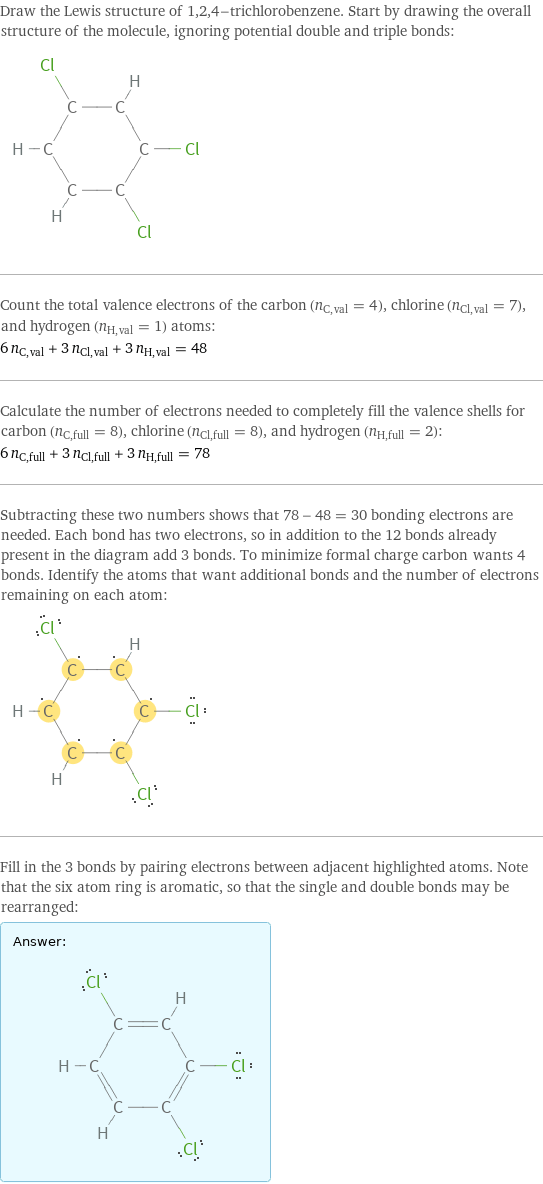
Draw the Lewis structure of 1, 2, 4-trichlorobenzene. Start by drawing the overall structure of the molecule, ignoring potential double and triple bonds: Count the total valence electrons of the carbon (n_C, val = 4), chlorine (n_Cl, val = 7), and hydrogen (n_H, val = 1) atoms: 6 n_C, val + 3 n_Cl, val + 3 n_H, val = 48 Calculate the number of electrons needed to completely fill the valence shells for carbon (n_C, full = 8), chlorine (n_Cl, full = 8), and hydrogen (n_H, full = 2): 6 n_C, full + 3 n_Cl, full + 3 n_H, full = 78 Subtracting these two numbers shows that 78 - 48 = 30 bonding electrons are needed. Each bond has two electrons, so in addition to the 12 bonds already present in the diagram add 3 bonds. To minimize formal charge carbon wants 4 bonds. Identify the atoms that want additional bonds and the number of electrons remaining on each atom: Fill in the 3 bonds by pairing electrons between adjacent highlighted atoms. Note that the six atom ring is aromatic, so that the single and double bonds may be rearranged: Answer: | |
3D structure
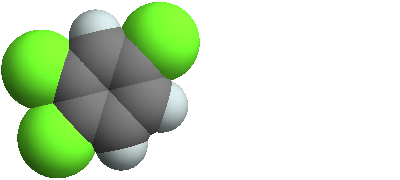
3D structure
Basic properties
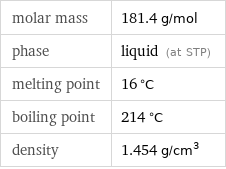
molar mass | 181.4 g/mol phase | liquid (at STP) melting point | 16 °C boiling point | 214 °C density | 1.454 g/cm^3
Units

Liquid properties (at STP)
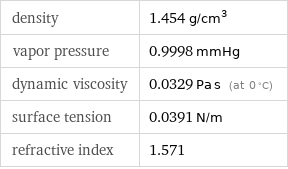
density | 1.454 g/cm^3 vapor pressure | 0.9998 mmHg dynamic viscosity | 0.0329 Pa s (at 0 °C) surface tension | 0.0391 N/m refractive index | 1.571
Units

Thermodynamic properties
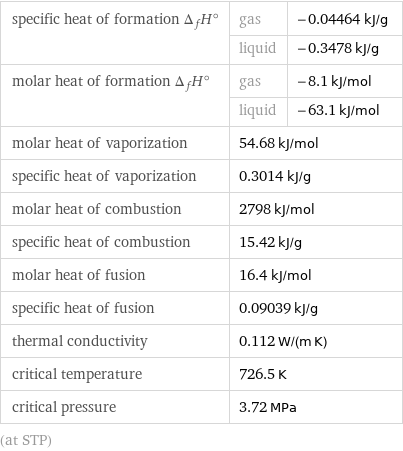
specific heat of formation Δ_fH° | gas | -0.04464 kJ/g | liquid | -0.3478 kJ/g molar heat of formation Δ_fH° | gas | -8.1 kJ/mol | liquid | -63.1 kJ/mol molar heat of vaporization | 54.68 kJ/mol | specific heat of vaporization | 0.3014 kJ/g | molar heat of combustion | 2798 kJ/mol | specific heat of combustion | 15.42 kJ/g | molar heat of fusion | 16.4 kJ/mol | specific heat of fusion | 0.09039 kJ/g | thermal conductivity | 0.112 W/(m K) | critical temperature | 726.5 K | critical pressure | 3.72 MPa | (at STP)
Chemical identifiers
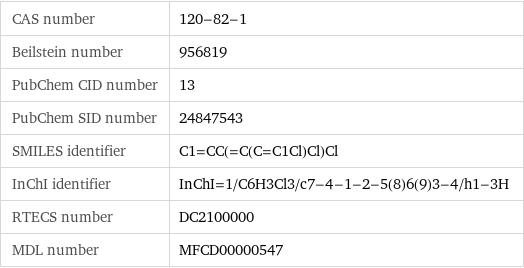
CAS number | 120-82-1 Beilstein number | 956819 PubChem CID number | 13 PubChem SID number | 24847543 SMILES identifier | C1=CC(=C(C=C1Cl)Cl)Cl InChI identifier | InChI=1/C6H3Cl3/c7-4-1-2-5(8)6(9)3-4/h1-3H RTECS number | DC2100000 MDL number | MFCD00000547
NFPA label

NFPA label
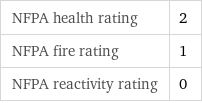
NFPA health rating | 2 NFPA fire rating | 1 NFPA reactivity rating | 0
Safety properties
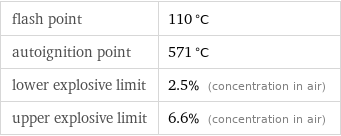
flash point | 110 °C autoignition point | 571 °C lower explosive limit | 2.5% (concentration in air) upper explosive limit | 6.6% (concentration in air)

DOT hazard class | 6.1 DOT numbers | 2321
Toxicity properties

lethal dosage | 756 mg/kg (oral dose for rats) short-term exposure limit | 40 mg/m^3

probable lethal dose for man | 600 mL (milliliters) long-term exposure limit | 40 mg/m^3 (over 8 hours) RTECS classes | tumorigen | mutagen | reproductive effector | primary irritant